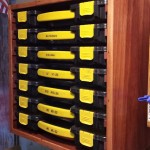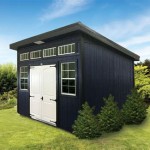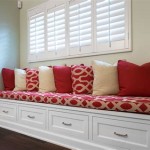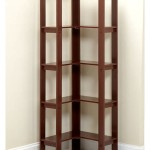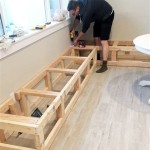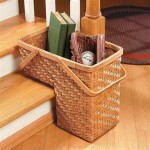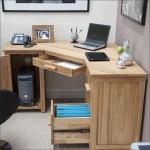Building a Twin Bed Frame with Storage: A Comprehensive Guide
Optimizing space within a bedroom is a perpetual consideration, especially in smaller living environments. A twin bed frame incorporating storage solutions offers a practical and aesthetically pleasing resolution. This article provides a detailed guide for constructing a twin bed frame with integrated storage, covering material selection, design considerations, and step-by-step construction instructions.
Before embarking on the construction process, a thorough understanding of the project's scope and requirements is crucial. This involves defining the desired storage capacity, assessing the available space, and selecting appropriate materials that align with the intended aesthetic and functional requirements.
The design phase is paramount, as it dictates the bed frame's structural integrity and storage capabilities. Careful consideration should be given to the overall dimensions, the number and size of storage compartments, and the method of access to these compartments (drawers, lift-up platforms, or open shelving).
1. Material Selection and Preparation
The choice of materials is fundamental to the bed frame's durability and visual appeal. Solid wood, plywood, and medium-density fiberboard (MDF) are commonly employed for bed frame construction. Solid wood offers superior strength and aesthetic qualities but is generally more expensive. Plywood provides a cost-effective alternative while maintaining considerable strength. MDF is a smooth, stable material ideal for painted finishes but is less resistant to moisture and impact than solid wood or plywood.
For the frame's structural components, such as the side rails and headboard, hardwood like oak, maple, or ash provides exceptional strength and longevity. Plywood or MDF can be used for the storage compartments and drawer boxes. The thickness of the material should be appropriate for the expected load. For example, 3/4-inch plywood is typically sufficient for the main frame, while 1/2-inch plywood may suffice for drawer bottoms.
Prior to assembly, all lumber should be properly measured, cut, and sanded. Accurate measurements are essential to ensure a square and stable frame. A miter saw is recommended for precise angled cuts, while a circular saw or table saw can be used for straight cuts. Sanding the wood surfaces removes any imperfections and provides a smooth surface for finishing.
A detailed cut list should be generated based on the design specifications. This list itemizes each component of the bed frame, including its dimensions and quantity. Adhering to the cut list ensures efficient material utilization and reduces the likelihood of errors during assembly.
Additionally, consider the fasteners required for assembly. Wood screws, nails, and wood glue are commonly used to join the various components. The length and type of screw should be appropriate for the material being joined. For example, coarse-threaded screws are ideal for softwood, while fine-threaded screws are better suited for hardwood.
2. Frame Assembly and Structural Reinforcement
The assembly process begins with the construction of the bed frame's perimeter. The side rails, headboard, and footboard are joined together to form a rectangular structure. Accurate alignment and secure fastening are crucial to ensuring the frame's stability.
Pocket hole joinery is a popular method for connecting the frame components. This technique involves drilling angled holes into the wood, allowing screws to be driven in at an angle. Pocket hole joinery creates a strong and concealed joint, resulting in a clean and professional appearance.
Alternatively, traditional methods such as mortise and tenon joints or dovetail joints can be employed for enhanced strength and aesthetic appeal. These methods require more advanced woodworking skills and tools but offer superior structural integrity.
Once the frame is assembled, reinforcement is essential to prevent sagging or warping over time. Corner braces, made of metal or wood, can be installed at each corner of the frame to provide additional support. These braces distribute the weight evenly and minimize stress on the joints.
A center support beam is also necessary to prevent the mattress from sagging. This beam runs lengthwise down the center of the frame and is typically supported by legs or a vertical partition within the storage compartments. The center support beam should be securely fastened to the side rails and headboard to ensure its stability.
The platform for the mattress can be constructed from plywood or slats. Plywood provides a solid and uniform surface, while slats allow for better air circulation and can improve mattress comfort. If using slats, ensure they are evenly spaced and securely fastened to the frame.
Consider the method of securing the mattress to the frame. Some designs incorporate a lip or edge around the perimeter of the frame to prevent the mattress from sliding. Alternatively, non-slip pads can be placed between the mattress and the frame to provide friction and prevent movement.
3. Integrating Storage Components
The incorporation of storage compartments is the defining feature of this bed frame design. The specific design and construction of these compartments will depend on the desired storage capacity and functionality. Drawers, lift-up platforms, and open shelving are common options.
Drawers provide concealed storage and are ideal for storing clothing, linens, or other personal items. Drawer boxes can be constructed from plywood or solid wood and should be assembled using strong and durable joints, such as dovetail joints or rabbet joints.
Drawer slides allow the drawers to open and close smoothly. Ball-bearing drawer slides are recommended for their durability and smooth operation. The weight capacity of the drawer slides should be appropriate for the expected load.
Lift-up platforms provide access to a large storage area beneath the mattress. These platforms are typically hinged and can be lifted up to reveal the storage space. Gas struts can be used to assist with lifting the platform and to hold it in the open position.
Open shelving provides readily accessible storage for books, decorative items, or other frequently used items. Shelves can be constructed from plywood or solid wood and should be securely fastened to the frame. Adjustable shelves allow for customization of the storage space.
The storage compartments should be integrated seamlessly into the bed frame's overall design. The fronts of the drawers or lift-up platforms should be flush with the frame, creating a clean and unified appearance. The hardware used for the storage compartments, such as drawer pulls or hinges, should complement the bed frame's overall aesthetic.
4. Finishing and Aesthetic Considerations
Completing the bed frame involves applying a finish that protects the wood and enhances its visual appeal. Paint, stain, and varnish are common finishing options. The choice of finish will depend on the desired aesthetic and the type of wood used.
Prior to applying the finish, the wood surface should be thoroughly sanded to remove any imperfections. A primer should be applied to prepare the surface for the finish. The primer helps to seal the wood and provides a uniform base for the finish.
Paint provides a solid color finish and is ideal for MDF or less visually appealing woods. Multiple coats of paint may be required to achieve a smooth and even finish. Sanding between coats will help to remove any imperfections and create a professional-looking result.
Stain enhances the natural beauty of the wood grain and is ideal for hardwoods. The stain should be applied evenly and allowed to penetrate the wood before being wiped off. Multiple coats of stain can be applied to achieve a desired color depth.
Varnish provides a protective layer that protects the wood from moisture and scratches. Varnish is available in a variety of sheens, from matte to glossy. Multiple coats of varnish should be applied, with sanding between coats, to achieve a durable and attractive finish.
In addition to the finish, other aesthetic considerations include the design of the headboard and footboard. The headboard can be a simple panel or an elaborate design with intricate carvings or inlays. The footboard can be a matching panel or a more minimalistic design.
The hardware used for the bed frame, such as drawer pulls, hinges, and screws, should also be chosen to complement the overall aesthetic. Consider using decorative hardware to add a touch of elegance or personality to the bed frame.
The final step is to assemble the bed frame in its final location and to place the mattress on the frame. Ensure that the frame is stable and that the mattress is properly supported. The completed bed frame should provide a comfortable and functional sleeping space with ample storage.

Diy Twin Platform Bed With Storage

Diy Twin Bed With Storage Drawers House Becoming Home

Do It Yourself Divas Diy Twin Storage Bedframe

Diy Twin Storage Bed Shanty 2 Chic

Diy Twin Platform Bed With Storage

Diy Twin Platform Bed With Storage

Diy Twin Low Loft Bed

Diy Daybed With Storage Drawers Twin Size Bed Fixthisbuildthat

Diy Twin Bed With Storage Woodworking Plans Instant Solid Construction Detailed Instructions Diagrams

Diy Daybed With Storage Drawers Twin Size Bed Fixthisbuildthat
Related Posts

